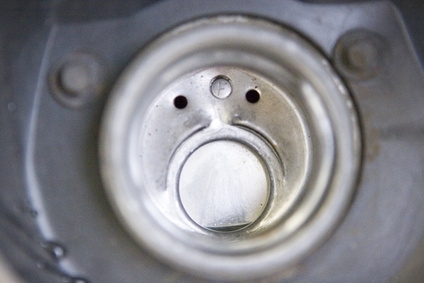
Old fuel tanks gather an interior coating of rust, varnish and sludge from decomposing fuel over the years. In addition to fouling and clogging the rest of the fuel system, this mess inside the tank can eventually cause it to rust through if it's allowed to get bad enough. Cleaning a tank effectively is a two-step process. The first step removes the rust; the second step removes the sludge and varnish, after which the tank can be etched and sealed if desired.
Siphon fuel from the tank into an approved container with a siphon pump and plastic tubing. A fuel tank is heavy to start with, so get rid of as much unnecessary weight as possible before removing it.
Remove the fuel tank from the vehicle. Use a wrench set and a pair of pliers to disconnect the hoses, wiring and fuel pump.
Rinse the tank out with a hose. Run a length of heavy chain through the filler hole, leaving the end of the chain outside the tank so you can easily retrieve it. Roll the tank around with the chain inside to knock off as much interior rust as possible. Retrieve the chain and rinse the tank with water again.
Put on protective clothing, including gloves and eye protection. Fill the tank with a few inches of water and carefully add a few ounces of muriatic acid. Work in an area with good ventilation. Gently roll the tank around to get the acid on all interior surfaces. Let it work for a couple of minutes, then add baking soda to the acid to neutralize it and pour it out into a resealable metal container for disposal as household hazardous waste.
Repeat the acid treatment until the solution looks clean when you pour it out. If desired, fill the tank with water and add half a gallon of acid, then let it sit overnight for a more thorough cleaning.
Seal all of the tank openings except one with duct tape or appropriately sized plugs. Fill the tank with a solution of hot water and degreaser, following the manufacturer's directions on dilution. Seal the final opening and let the tank sit, rotating it every few hours to cover all interior surfaces. Allow the tank to soak for at least 24 hours; repeat if still dirty.
Drain the tank and dry it by blowing warm air through it with a hairdryer. The bare metal of the freshly cleaned tank will start to rust very quickly if allowed to stay damp.